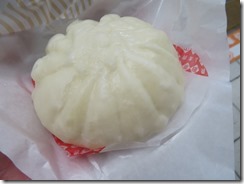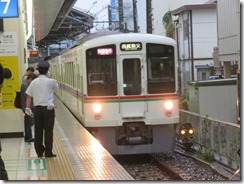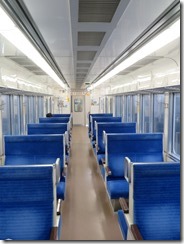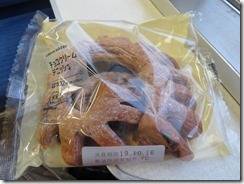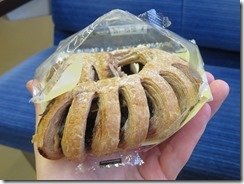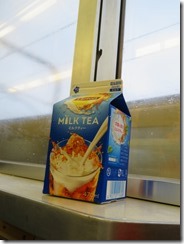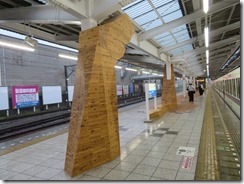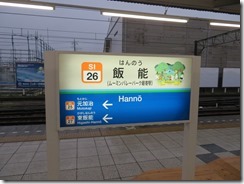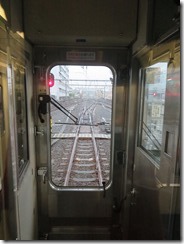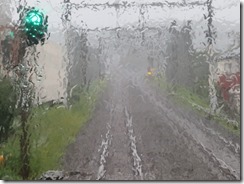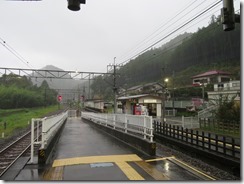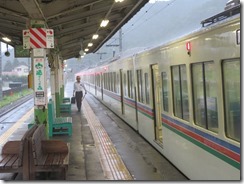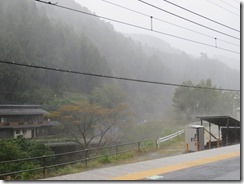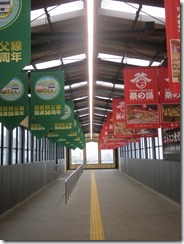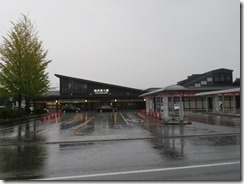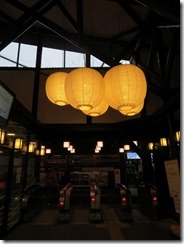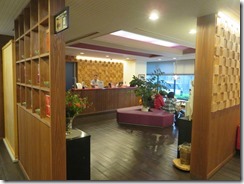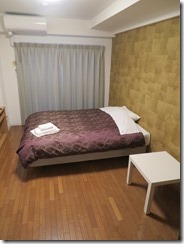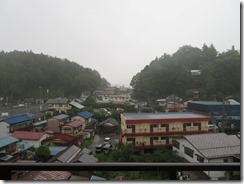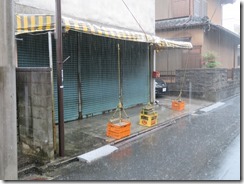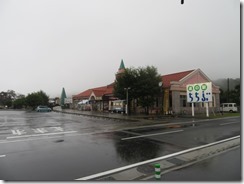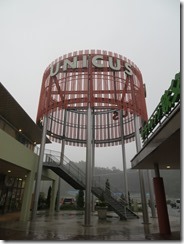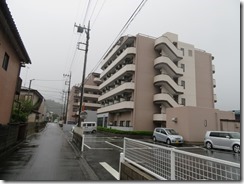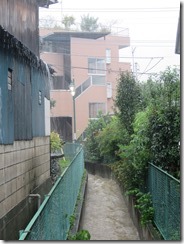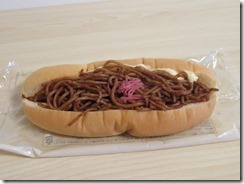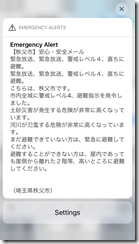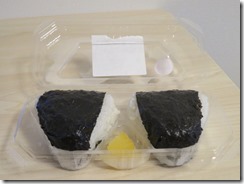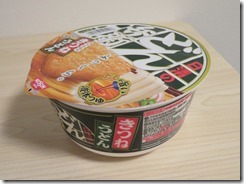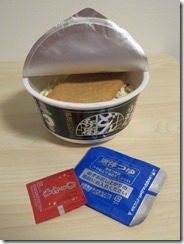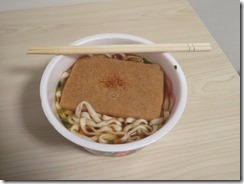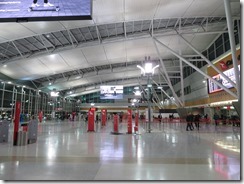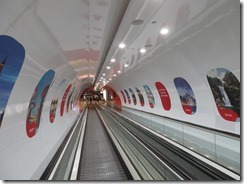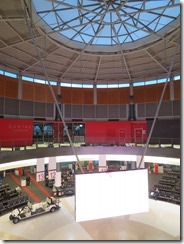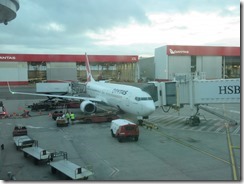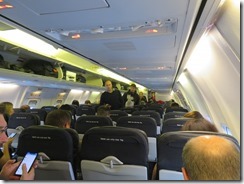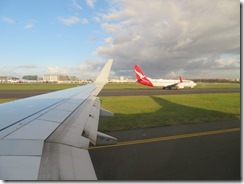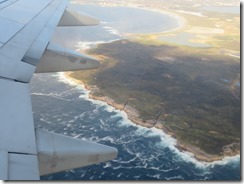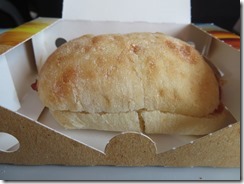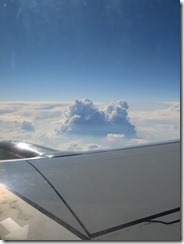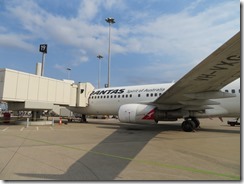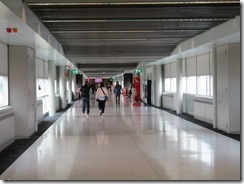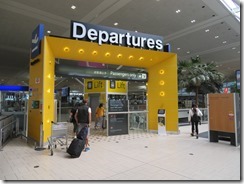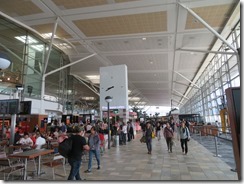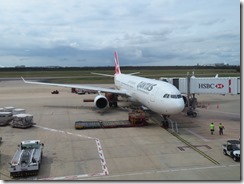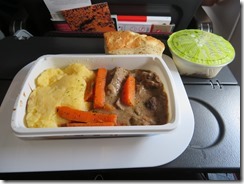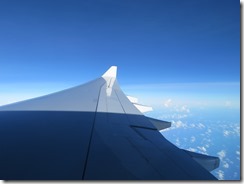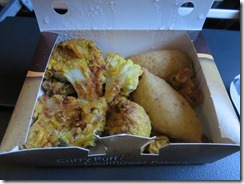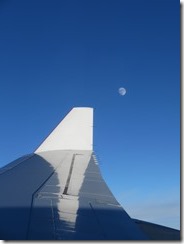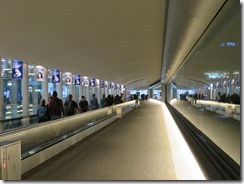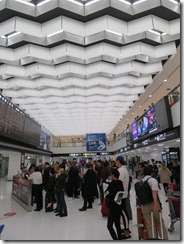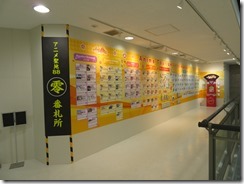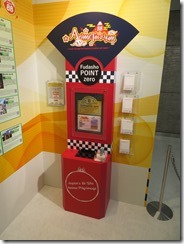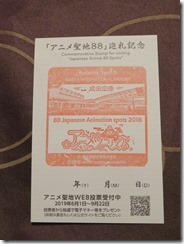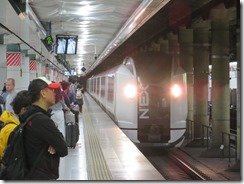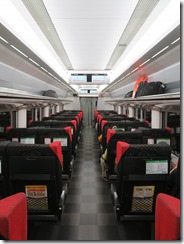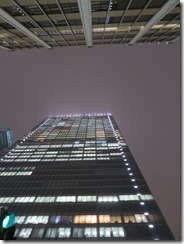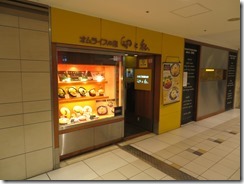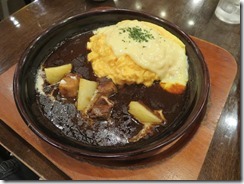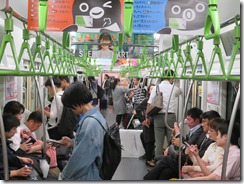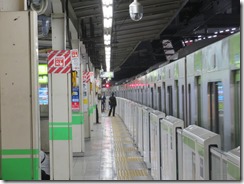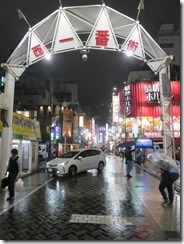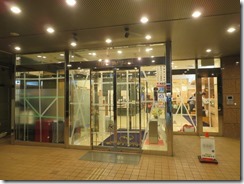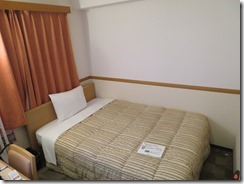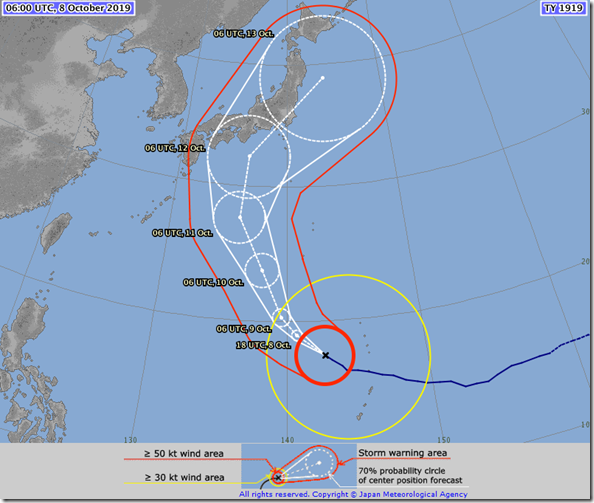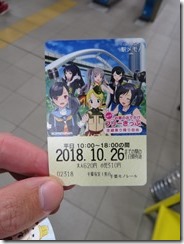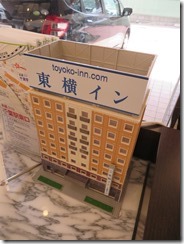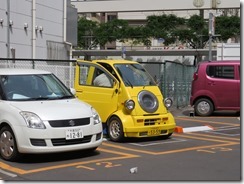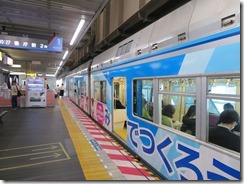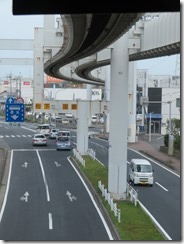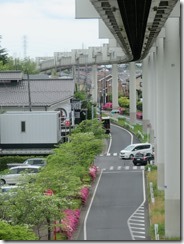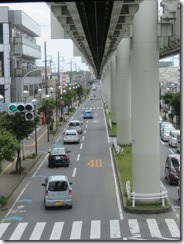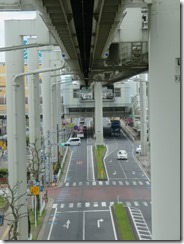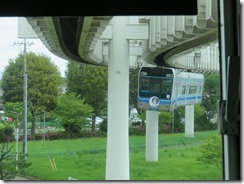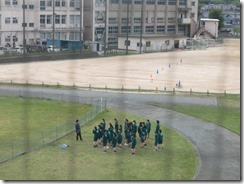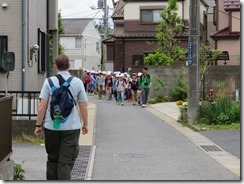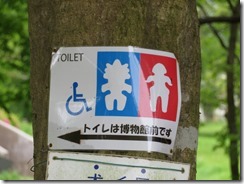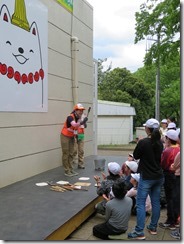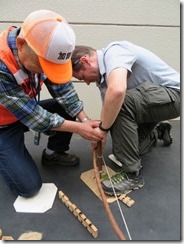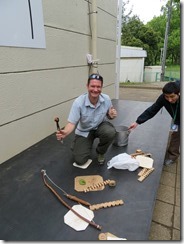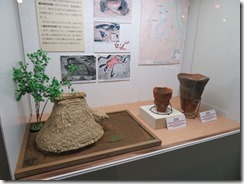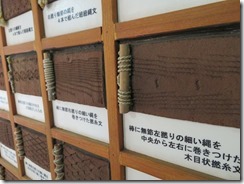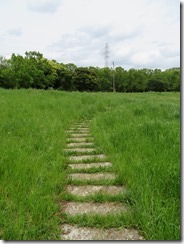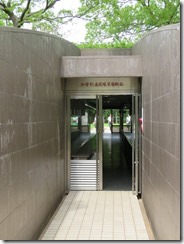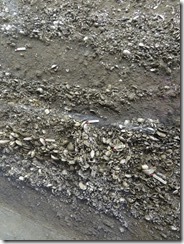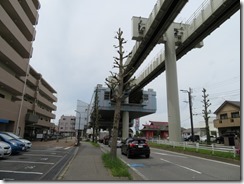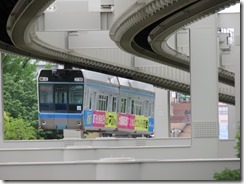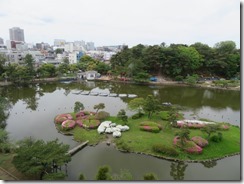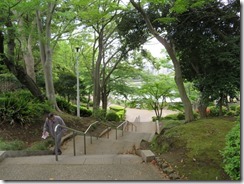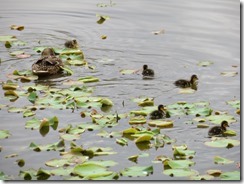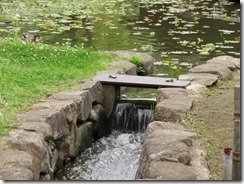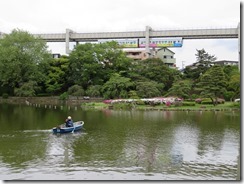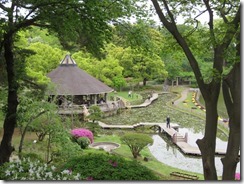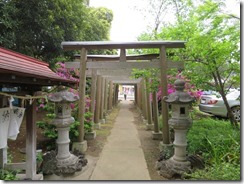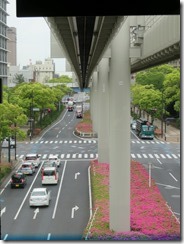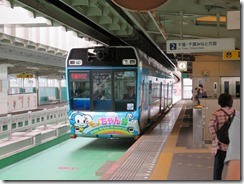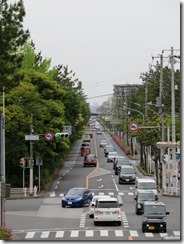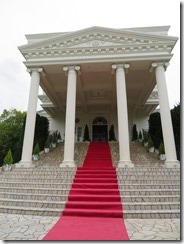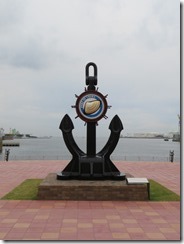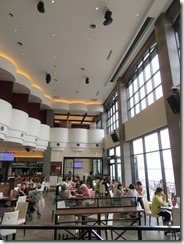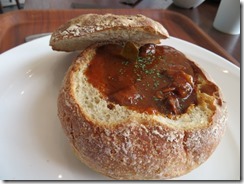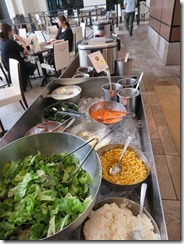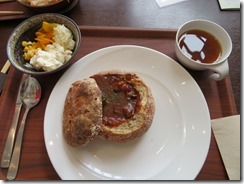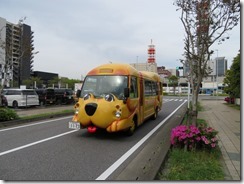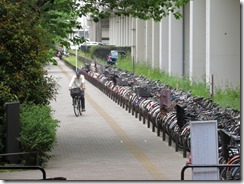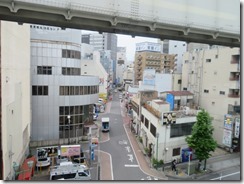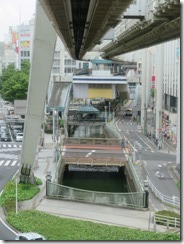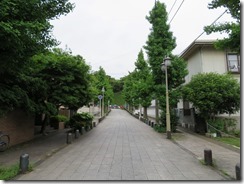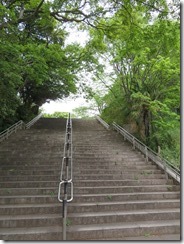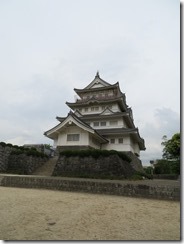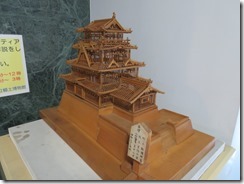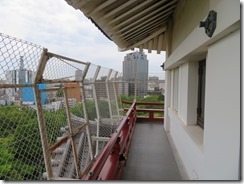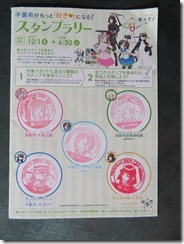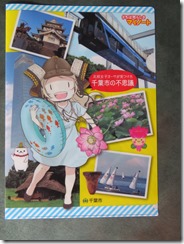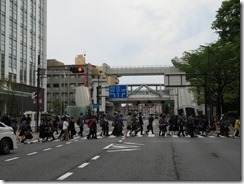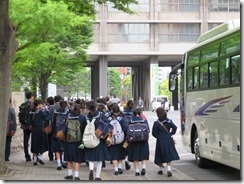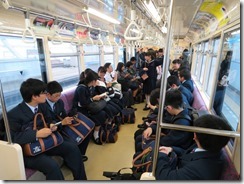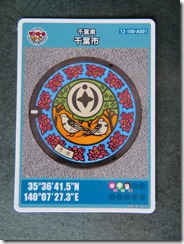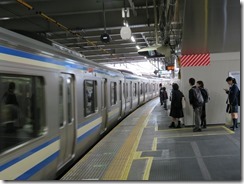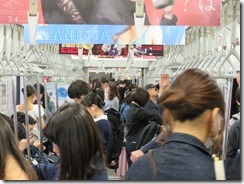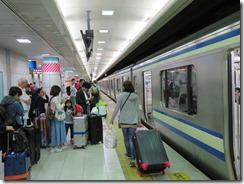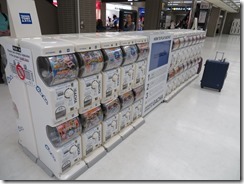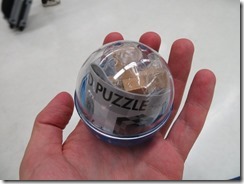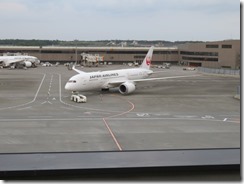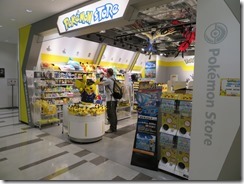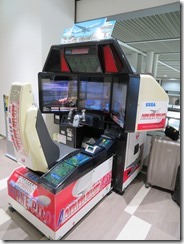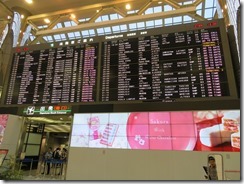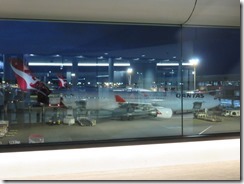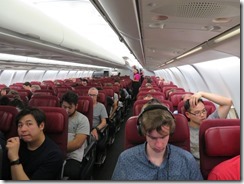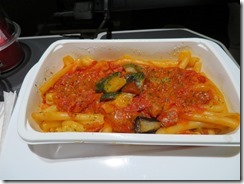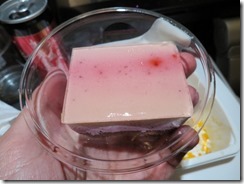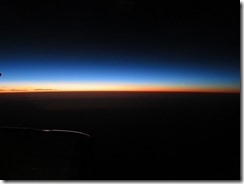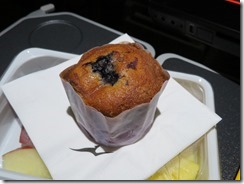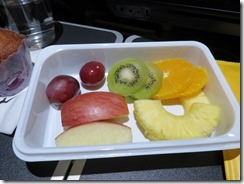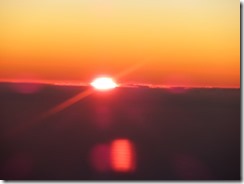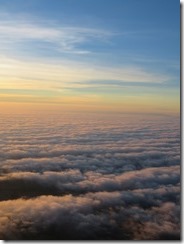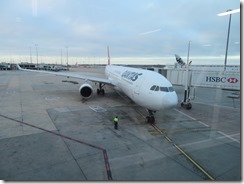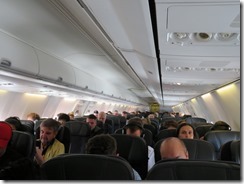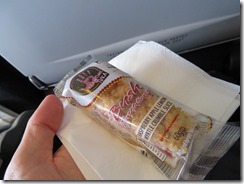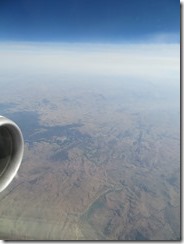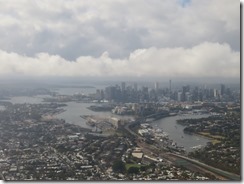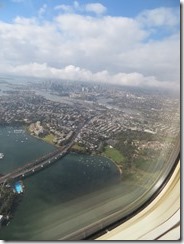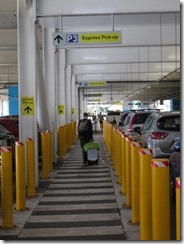Yeah, ok. That’s not a place name or a word in kanji. But it was important to today’s events.
I find that when I’m planning holidays, planned activities where timing causes stress create a kind of tunnel vision for me. All I can think about in the weeks leading up to the holiday is that particular activity – in 2017, it was the day went from Yunomine Onsen to Tokyo via Nachi; in 2018 it was the Tateyama-Kurobe Alpine Route day. For this trip, it was today’s planned activity. Like, there’s days further along in my itinerary where I don’t have anything planned – that’s how much today (and to a lesser extent, Monday) occupied my attention.
At least, that was the case until last week, when I discovered Mister Super-Typhoon Hagibis bearing down on Tokyo, coincidentally arriving on the same day that was already my focus, and inconveniently negating everything I had planned.
In a slightly lesser but more literal sense, I find being rained on causes a lot of tunnel vision for me – if I’m using an umbrella or wearing a raincoat hood, I just seem to stop looking around at things; I look down or huddle up. A hoodie hood or even a cold-weather jacket hood doesn’t seem to have the same effect. I remember doing a night bush walk in the Barrington Tops one year while it was raining, and honestly all I remember about that (aside from the leeches) is the sound of the rain on my raincoat hood, and the sound of my breathing being magnified by the hood, and pretty much nothing about the walk itself. I mean, granted it was night time, but surely I ought to remember something.
But on with the show. I did not sleep well last night – a combination of the usual first-night-in-a-new-place issue with the usual setting-the-alarm-early-then-anticipating-it-all-night issue. So I basically spent the whole night going in and out of a light doze, and also being forced to watch an irritating recurring dream featuring a whole bunch of people competing to colour sectors of a map in their team’s colours, only noone could tell who was winning because either everyone was colourblind or the screens were in greyscale so all the teams looked the same colour, except for one person who had perfect memory and could remember which specific individual won each specific sector. But, moving on.
Eventually woke up at 6am so I could hurriedly get dressed, pack away my chargers, and set up my travel SIM card (because it’s a 16-day SIM and a 17-day trip – had to manage yesterday evening with as many different free wifi hotspots as I could come across) before leaving by 6:30. As I worked out last night, it’d take me a quarter hour to walk to the station, but I also needed to buy breakfast en route, because I was checking out of the hotel before they started serving it.
Outside, it was apparent that Hagibis was on his way – it was pouring down rain and also gusting with wind, so I had to alternate between wrangling the umbrella and just putting it down and dashing. I stopped at the convenience store hoping to grab some rice balls, but there wasn’t a single one there – I thought at first that people had panic-bought the entire supply, but I noticed later that other stores had plenty, and as I left, a truck pulled up outside, so perhaps today’s supply simply had not been delivered yet. So instead I bought a meat bun, and a sweet chocolate danish thing, some milk tea for fluids and calcium and a cup noodle for dinner (not panic-bought – bought with aforethought), and headed damply for the station.
Today I was off to the town of Chichibu in Saitama prefecture, about an hour and forty minutes away by rapid express (or an hour twenty by limited express, grr) at the other end of the Seibu Chichibu line, which is what I was doing at the Seibu Ikebukuro station. I headed into the station with my Suica card and stood on the platform munching my meat bun.
Brief lesson time, “Seibu” means “west Musashi” (the “bu” in Seibu” is the same character as the “mu” in “Musashi”) – I’ve mentioned Musashi before; it’s the name of the old province that was comprised of what is now the Tokyo Metropolis, most of Saitama Prefecture and parts of Kanagawa Prefecture. Seibu is called such because it originally served the western half of Musashi – it’s paired with Tobu, “east Musashi”, which (as you can probably guess), served the eastern half. I mean, it’s no longer split east-west like that – both companies have lines going all over now. But what amuses me is that at Ikebukuro, the Seibu platforms – and the Seibu shopping centre – are on the east side of the JR Ikebukuro station, while the Tobu platforms and shopping centre are on the west.
Soon, my train arrived. Contrary to the “all gone” predictions from the station attendant yesterday, the rapid express was basically empty. Not sure why everyone would have gone for the reserved train and noone for the non-reserved train. I almost wonder if it would have been worth trying the ticket office again – it usually opens at 9am on Saturdays, but there was a sign in the window last night saying (assuming I read it correctly) that because the trains were being stopped at 1pm, the office would open at 6:50am instead. But, well, I was there, and the train would be coming soon, so I might as well get it. And it’d even beat the 7:30 limited express to Chichibu by three minutes.
So, I hopped on. Then hopped off again, because I remembered I wanted to be in the first car so that I could see the forward view – and because I was at the rear car, that meant walking the entire length of the train. Ate my bun and drank my tea. And then as we pulled into Hanno Station on the outskirts of Tokyo, I suddenly remembered that at Hanno, the train reverses direction, and it’s after Hanno that the view gets really nice, so I had to walk the length of the train again. Though, there were some rather pretty columns holding up the station roof.
This amused me. It’s not often you see the “next station” and “previous station” indicators pointing in the same direction.
(Side note, Higashi-Hanno, the next stop after Hanno, is one of the Anime 88 Pilgrimage stops, because it’s the home station of the characters in an anime that I quite enjoy called “Yama no Susume” (subtitled in rough translation as “Encouragement of Climb”, but a direct translation is more like “the recommended mountain”) about schoolgirls who climb mountains for fun – the main character’s experience on Mount Fuji is nearly identical to mine. It’s from this series that I first learnt about Mount Takao, which James and I visited last year. I would have liked to get off the train and poke around, but weather and timing were against me. But I digress.)
The view was quite spectacular, though with rain constantly pelting the train windows, it was impossible to photograph. After a few delays thanks to the rain – incluidng having to wait in stations for delayed trains coming the other way, since the Hanno-Chichibu section is single-tracked – we eventually arrived at Seibu-Chichibu Station at 9:30, about forty-five minutes behind schedule.
I headed out of the station and into pouring rain, but pretty much no wind at all. I pondered getting a taxi to the hotel, but it was only a few minutes’ walk away, so I put up the umbrella and went. I probably should have gone for the taxi, because my legs and shoes and suitcase got quite damp – my shoes, in particular, are not as waterproof as I may have hoped.
Here in Chichibu, I’m staying at the Comfort Inn Miyabi – unfortunately, there’s no Toyoko Inn in this town, and while there is a Route Inn (another business hotel chain) much closer to the station, they only had smoking rooms left. Checking in, I was speaking to the woman behind the counter in Japanese, when in mid-conversation she suddenly switched to almost-perfect English. And then handed me the room key – I could just go straight up, even though it was only 10am, an hour before required check-out time at 11am, and a full seven hours before the first official check-in time at 3pm. Which was nice, because it meant I didn’t have to kill time in the lobby – or worse, go back out into the pouring rain.
My room’s on the top floor – floor six – with a nice view out over some of the hills that separate Chichibu from the adjoining village of Yokoze. As I first opened the room door, I found a step up and a pair of slippers on top of the step – a common feature in traditional Japanese houses – and I almost wondered if I’d actually booked a ryokan by accident. But no, when I opened the inner door (past, to my further surprise, a tiny kitchen) I found a western-style bed. And a balcony. Discovered the light in the bedroom has a remote control when I tried to turn the aircon on and the lights turned off instead (the aircon remote was hanging on the wall behind the curtains – took me a while to spot it).
I opened my suitcase to change out of my wet trousers and socks, and discovered that though most of the suitcase seemed to shed water quite well, the zipper had leaked, so things around the top edge of the suitcase had gotten a bit wet – including my Lonely Planet guidebook, which I’d packed at the top so I could get at it. After spreading things out to dry, I pulled my iPad out of my backpack and found that it too was a bit damp – even though most of the backpack seemed to shed water quite well, the underside of my bag had soaked through. I’m not even sure how it could have gotten rained on that side – perhaps I put it down on a wet spot in the hotel lobby when I got out the proof-of-booking paperwork. That one’s particularly annoying, because the backpack has a rain cover in a built-in pouch, which I never think to actually use. Fortunately, nothing that dislikes water got particularly wet, but now I had basically the entire contents of my backpack and half the contents of my suitcase spread around the floor and wardrobe.
After I spent a bit of time relaxing in the hotel, I thought I should probably go out and get some lunch before the forecast 50-knot winds arrived. I put on my new raincoat and waterproof pants that I bought especially for this trip, put my wet socks and shoes back on, and headed out. There’s a food court attached to Seibu-Chichibu Station that I’d quite wanted to try, but I discovered when I passed through earlier that they closed it for the whole day (thanks, Obama Hagibis). So instead I headed down the main street towards a restaurant suggested by a friend that serves miso pork bowl, a local specialty. I confess, I did not have a huge amount of hope that it’d be open… and it wasn’t. There was a beef bowl shop I passed on the way that was open, but I still kinda wanted to try some local specialties, so I kept walking past it to the Chichibu Michi no Eki. (Passed a bookshop on the way, and tried again for a stamp book – still no dice.)
Michi no Eki – literally “stations of the road” – are basically like Australian highway rest stops, but far grander. Aside from providing a car park and a toilet, they always have a shop selling various local produce and souvenirs, and quite frequently a restaurant with local dishes, and also provide tourist information. Sometimes they have even more features, like onsen baths, fish markets, lookouts, gardens and so forth. They’re basically the modern equivalent of the Tokaido and Nakasendo post towns. I’ve been wanting to visit one (or more) for a long time, but have thought I’d pretty much need to rent a car and go driving on the highways… only to discover when planning this trip that Chichibu has one sitting just a few blocks from the centre of town. (This one doesn’t have an onsen, though there is one in the food court at Seibu-Chichibu.)
Buuuut… I arrived at 1pm, only to discover it had closed at 12. And I really didn’t want to walk all the way back to the beef bowl restaurant – aside from the fact that I was now closer to my hotel than the beef bowl place, my socks were getting wetter and wetter – they were already starting to squelch when I passed the beef bowl place the first time. So, like the dog with two bones, I got greedy, so now I had neither. And also wetter shoes. Though… I guess it’s more “picky” than “greedy”…
Instead, I walked a few blocks to a convenience store I’d previously seen from my room’s balcony (it’s slightly to the left in the photo of the view I posted above) and perused the bento boxes they had there. I was so unenthused with the available options that I almost considered heading for the beef bowl place anyway… then turned around to spot a yakisoba-pan sitting on the shelf, and I’d been wanting to try yakisoba-pan for aaaages, so I grabbed it. And some onigiri, because they spited me this morning. (“Spited” looks weird. Maybe on the pattern of smite > smote, spote?) The yakisoba-pan was scrumptious (it’s fried soba noodles in basically a hot dog bun – yaki=fried, pan=bread, from the French “pain”). This is my hotel, by the way. And a rather strongly-flowing stormwater channel in between the convenience store and my hotel.
After lunch, the wind was starting to pick up a bit… which is to say, Hagibis was finally arriving in earnest. I also started getting notices on my phone from the Chichibu City government over the Emergency Alert broadcast system – and I’ve quite literally never seen that before in my life. I’m simultaneously impressed by the utility and slightly creeped out by how Big Brother knows I’m in Chichibu. Anyway, they were all in Japanese, saying things like “Emergency level 4 – there’s a risk of flooding and landslides, so if you’re near a river or mountain, start thinking about evacuating. If you can’t, get on the second floor or higher”.
I started getting a mite concerned when they reached level 5, which means “The disaster is already happening. Make the best decisions to protect your life.” but when I went downstairs to talk to the hotel desk person about it, she barely even batted an eye. Sooo… I guess I’ll take her word for it? Also, I’m on the sixth floor anyway. (I do suspect there’s been landslides here in Saitama somewhere, though I’m having difficulty finding any news articles with Google. Hoping that the train line out of here hasn’t been cut…)
Had my rice balls for arvo tea.
Later, I had my cup noodle for dinner – kitsune udon. The distinctive feature is the mat of fried tofu on top of the udon noodles – it’s called kitsune (fox) because supposedly foxes like fried tofu. It looked uncomfortably like a sponge, though. Quite tasty, either way.
Now it’s time get to bed. Maybe catch up on some sleep – I’ve had two early mornings in a row with a late night in between. I don’t want to sound like I’m taunting the storm, but… I’m not sure Hagibis seems quite as powerful as I was picturing. I mean, granted I’ve been inside since the wind started and not out standing in it, but I was lead to expect sustained winds as fast as a car driving on a highway, but gazing out over the balcony, it’s kinda just looked like a rather blustery (albeit very rainy) day. It is forecast to continue basically all night, though, so I guess I haven’t even seen the worst of it. And I’m trying not to notice the news articles making comparisons to the Kanogawa Typhoon of 1958, which killed more than 1200 people…
(Typhoon Hagibis now has its own Wikipedia page, mind – that’s how you know you’ve got it made. Last time I checked, it just redirected to 2019 Pacific typhoon season.)
Fortunately, sunny weather is still forecast for tomorrow, and tomorrow’s big event is still on, though possibly with a bit of a delay – they’ll make the final call at 6am, in any case. What event? Why, you’ll find out tomorrow.
I hope.
Today’s photo count: A hundred and ninety-six. I’ll start taking more photos when the rain stops. Promise.
Today’s step count: 8050 steps – 5.4km – 2 flights of stairs

